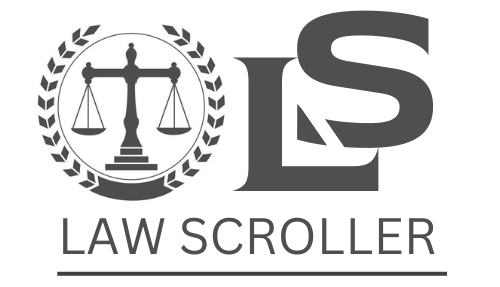Subaru of America is currently the subject of a proposed class‑action lawsuit alleging that the driver‑side mirrors in certain 2024 models—specifically the Crosstrek, Ascent, Solterra, and Outback—are dangerously defective. Plaintiffs claim these mirrors shake or vibrate so severely at highway speeds that they compromise visibility and safety. In this post, we’ll examine the full scope of the litigation, technical allegations, safety implications, Subaru’s response, legal claims, and what consumers should know going forward.
1. Litigation Background & Covered Models

The lawsuit, filed on September 20, 2024, in the U.S. District Court for the District of New Jersey and titled Robinson v. Subaru of America, Inc., focuses initially on the 2024 Crosstrek and Ascent. It has since been expanded to include 2024 Outback and Solterra vehicles.
Plaintiffs later amended the complaint to add individuals from Texas, Utah, Alaska, Florida, and California. The initial plaintiff, Katelyn Robinson of Texas, claims she experienced severe mirror vibration from day one of ownership .
2. Alleged Defect: Vibration & Safety Hazard
The core issue: driver‑side mirrors allegedly vibrate when driving above ~40 mph, distorting the reflection and impeding safe lane changes or merging.
From the complaint:
“A vibrating mirror … poses an extreme safety hazard … distorts the reflection … making it difficult for a driver to accurately judge distances or identify potential hazards, especially at night” .
Additionally, plaintiffs assert that the mirror failure potentially violates Federal Motor Vehicle Safety Standard No. 111, which requires clear, undistorted rear visibility and glare reduction.
3. Plaintiff Reports & Consumer Feedback
Numerous Subaru owners have confirmed these issues in online forums and social media. A Reddit user explained:
“I’ve had my Crosstrek since June 2023 and since day one the driver mirror shakes … Have had the mirror replaced multiple times … Subaru is aware of it but no fix yet.”
Another user noted:
“My driver’s side mirror shakes about enough to make license plate lettering difficult … super noticeable at night … passenger‑side is crystal clear.”
These consistent reports point to a systemic problem, strengthening the class‑action case.
4. Alleged Cause: Material or Structural Deficiency
The class‑action contends that the defect stems from “deficient materials” in mirror housings or flawed structural design, leading to weak mounting points unable to withstand normal driving conditions.
Despite repeat repairs, consumers allege the replacements carry the same defect, suggesting the issue is rooted in mirror assembly design—not isolated manufacturing mishaps .
5. Subaru’s Alleged Awareness & Response
Plaintiffs accuse Subaru of knowing about the mirror defect but failing to take meaningful action:
Subaru allegedly issued a Technical Service Bulletin (TSB 12-195-15) in 2015 regarding mirror vibrations—but this TSB did not mention the affected 2024 models.
Despite mounting consumer complaints and NHTSA reports, Subaru reportedly continued replacing defective mirrors with identical, flawed parts.
Plaintiffs claim there has been no official recall, and that Subaru dealers lack proper procedures to diagnose or remedy the persistent issue.
6. Legal Claims & Relief Sought
The lawsuit includes numerous claims:
- Violation of state consumer protection laws, like the Texas Deceptive Trade Practices Act.
- Fraudulent concealment, asserting Subaru knowingly sold unsafe vehicles without disclosing the mirror defect.
- Breach of express and implied warranties, contending the mirrors are not “safe, reliable, and high-quality” as advertised.
- Unjust enrichment, claiming Subaru profited while avoiding warranty obligations.
Plaintiffs are seeking damages, restitution, punitive damages, and equitable relief—including mirror replacement, extended warranty coverage, and notification of affected consumers.
7. Subaru’s Defense & Motion to Dismiss
Subaru has responded with a motion to dismiss, arguing:
- The lawsuit alleges a design defect, which is excluded under Subaru’s New Vehicle Limited Warranty that covers only material and workmanship defects.
- Plaintiffs failed to allege specific statements or representations by Subaru that misled consumers, resulting in vague causation and reliance claims.
- The plaintiffs’ request for a recall exceeds the court’s authority, as NHTSA—not the judiciary—governs safety recalls .
8. Safety & Regulatory Ramifications
The allegations highlight a significant safety concern: impaired visibility from a vibrating mirror increases the likelihood of accidents—especially during lane changes or night driving.
The plaintiffs note several NHTSA complaints, yet no formal recall has been issued, raising questions about regulatory oversight and manufacturer accountability .
9. Consumer Impact & Next Steps
Affected consumers should monitor the case closely. If certified, the class could include buyers and lessees in multiple states. To protect their rights, owners should:
- File reports with NHTSA detailing mirror vibration issues.
- Retain service records showing attempts at repairs or replacements.
- Follow developments in the lawsuit and consider legal representation if a class is certified.
10. Conclusion & Outlook
The Subaru class‑action lawsuit encapsulates key themes in modern product‑liability and consumer law:
- A widespread, reproducible defect causing genuine safety concerns.
- Alleged manufacturer awareness coupled with inadequate fix protocols.
- Plaintiffs’ pursuit of consumer protection, warranty, and fraud remedies.
- Subaru’s counter-defense grounded in warranty disclaimers and procedural arguments.
As the case progresses—particularly with motions pending and class‑certification decisions approaching—Subaru and consumer legal teams will likely intensify scrutiny. A certified class and substantive damages could prompt official recalls, redesign mandates, or significant financial compensation for affected customers.
For now, Subaru owners experiencing driver‑side mirror issues should document and report defects—and stay tuned for court rulings that could shape both corporate accountability and vehicle safety standards.

 Oliver Johnson is LawScroller’s Senior Legal Correspondent specializing in civil litigation, class actions, and consumer lawsuit coverage. He breaks down complex settlements and court decisions into clear, practical guidance for readers.
Oliver Johnson is LawScroller’s Senior Legal Correspondent specializing in civil litigation, class actions, and consumer lawsuit coverage. He breaks down complex settlements and court decisions into clear, practical guidance for readers.